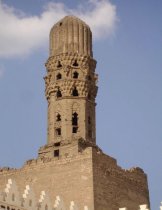alhambra Spain
AlhambraAnd fortress of the monarchs of . The name Alhambra, signifying in Arabic “the red, ” is probably derived from the colour of the sun-dried tapia, bricks made of fine gravel and clay, of which the outer walls are built.
Constructed on a plateau that overlooks the city of Granada, the palace was built chiefly between 1238 and 1358, in the reigns of , founder of the , and his successors. The splendid decorations of the interior are ascribed to Yūsuf I (died 1354). After the expulsion of the Moors in 1492, much of the interior was effaced and the furniture was ruined or removed. , who ruled in Spain as Charles I (1516–56), rebuilt portions in the style and destroyed part of the Alhambra in order to build an Italianate palace designed by in 1526. In 1812 some of the towers were blown up by the French during the , and in 1821 an earthquake caused further damage to the structure. Restoration of the building was undertaken in 1828 and continued through the 20th century.
Read More on This Topic

Islamic arts: Western Islamic art: Moorish
A stunning exception to the austerity of North African architecture exists in Spain in the Alhambra palace complex at Granada. The hill site of the Alhambra had been occupied by a citadel and possibly by a palace since the 11th century, but little of those earlier constructions has remained. In the 14th century two successive princes, Yūsuf I and Muḥammad V, transformed the hill...
READ MOREThe Moorish portion of the Alhambra includes the Alcazaba, or citadel, which is the oldest part—only its massive outer walls, towers, and ramparts are left. Beyond the Alcazaba is the Alhambra palace, and beyond that the Alhambra Alta (Upper Alhambra), which was originally tenanted by officials and courtiers and was part of a royal city constituting a seat of government.
Source: www.britannica.com
Related posts:








